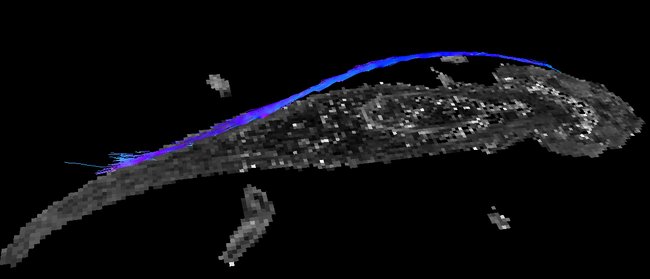Spinal cord regeneration – a contusion trauma model

MRI fibertracking of axolotl spinal cord
Spinal cord regeneration – a contusion trauma model
In the clinic a spinal cord trauma is most often a high-energy trauma with a blunt impact causing a contusion trauma. The impact of spinal cord injury (SCI) is profound and leads to severe disabilities. Neurological impairment due to SCI is permanent and the average age at injury is only 28 years and, accordingly, most patients have to live for several decades with severe impairment. The potential for improvement is great, alas not obtainable with our current knowledge of neuro-regeneration. However, some vertebrate animals do possess the ability to regenerate several tissue types including the central nervous system. One of them is the Mexican Salamander (Ambystoma mexicanum) – the axolotl.
In this project, the regenerative capacity of the spinal cord of the axolotl is investigated by inflicting a contusion trauma to the spinal cord and conducting continuous follow up. In a clinical setting a spinal cord trauma is most often a high energy trauma with a blunt impact causing a contusion trauma. Therefore establishment of a contusion trauma model is essential in research relating to interventions and mechanisms in such a trauma.
The axolotl SCI model is validated by several modalities: evoked motor potential examinations, histology and MRI fibertracking are applied at every follow up during the regeneration phase. Furthermore two functional tests, swimming capacity and movement tracking, are conducted at every follow up. This project seeks to establish a model with the apparent purpose of further investigations of the molecular and cellular mechanisms facilitating regeneration after SCI.
PROJECTS
Cardiac regeneration
Non-invasive tracking of cells
Spinal cord regeneration – a contusion trauma model


